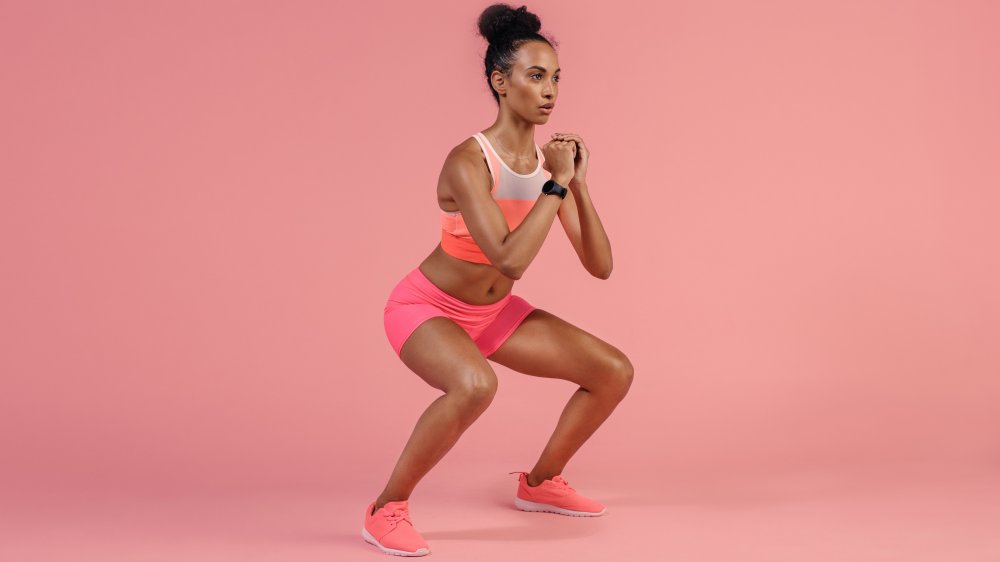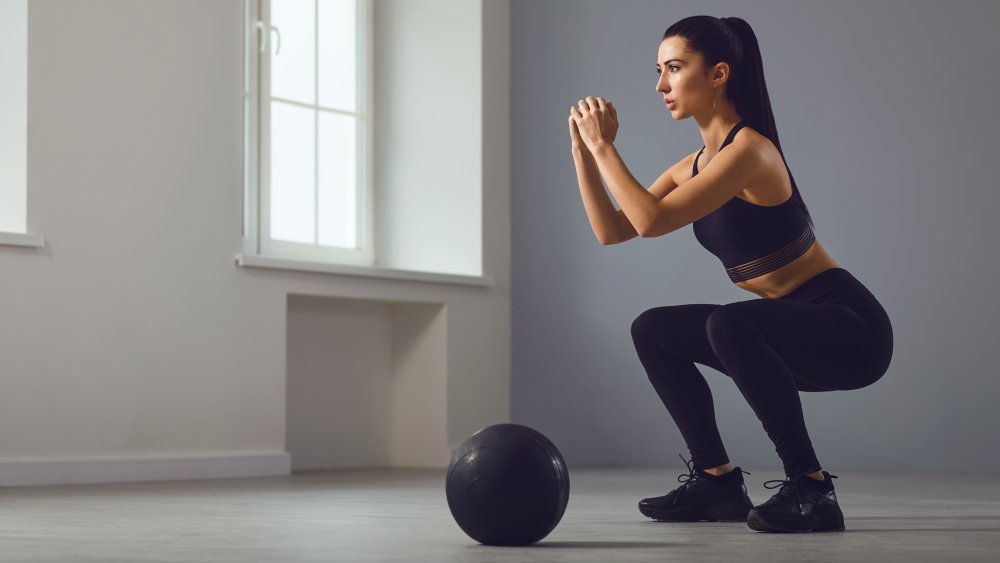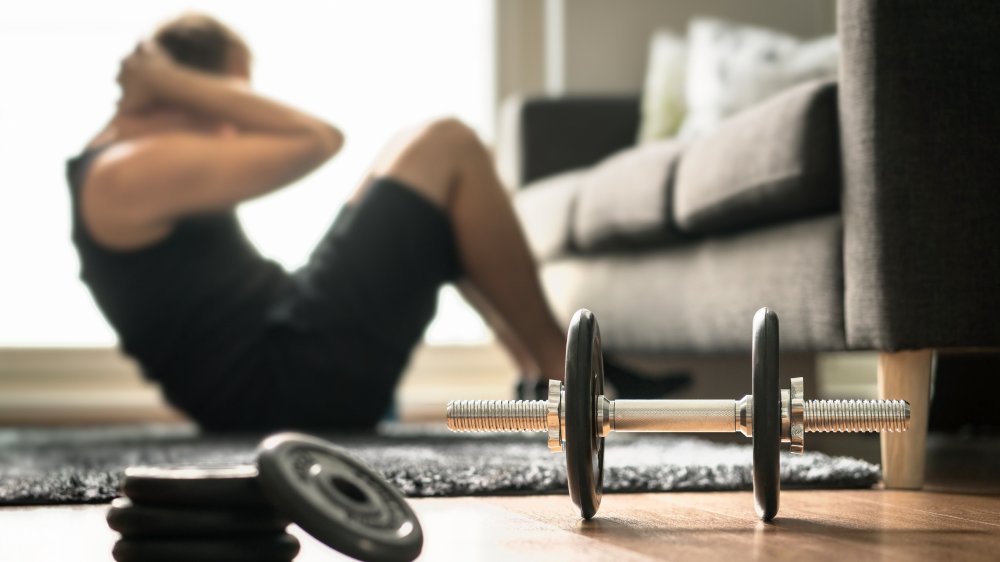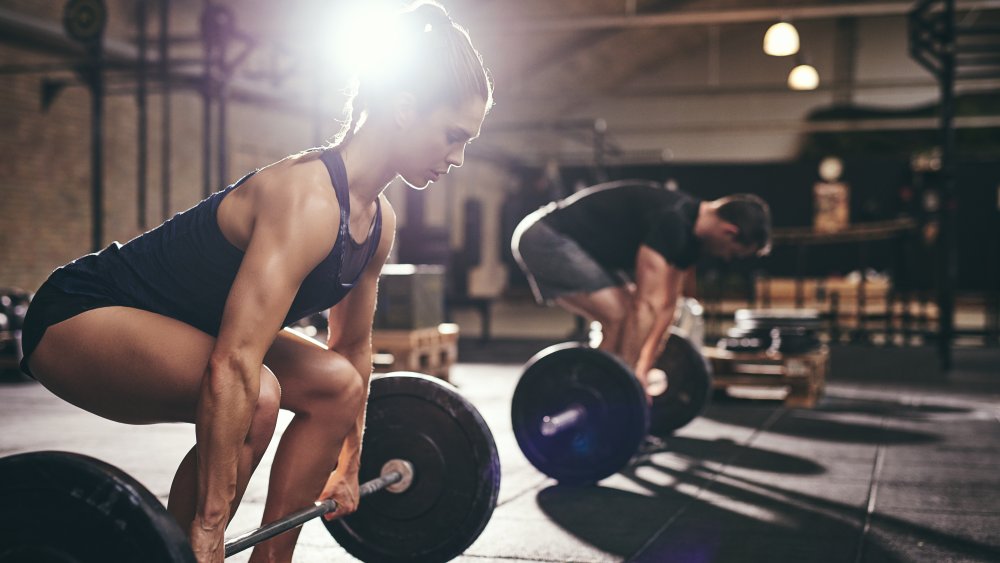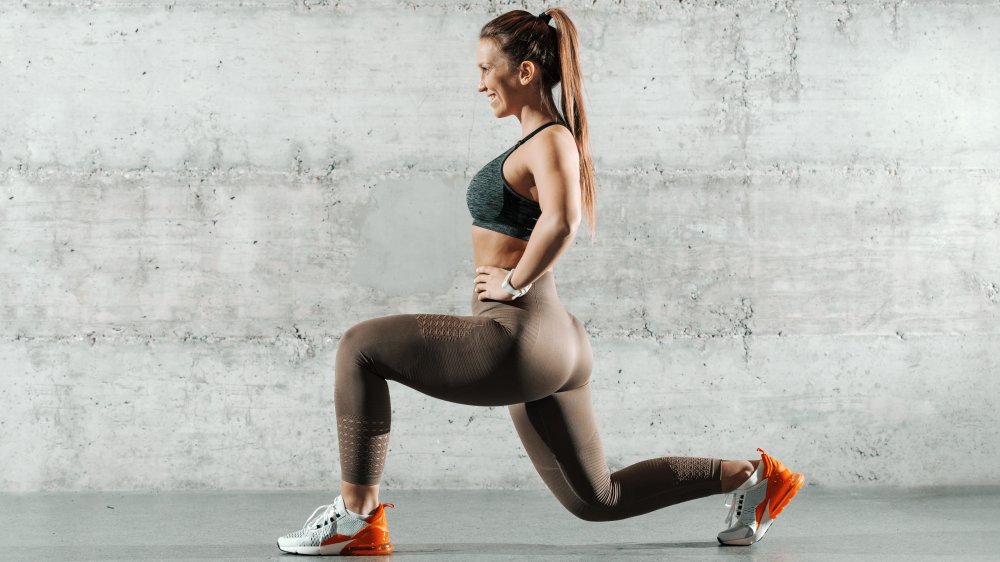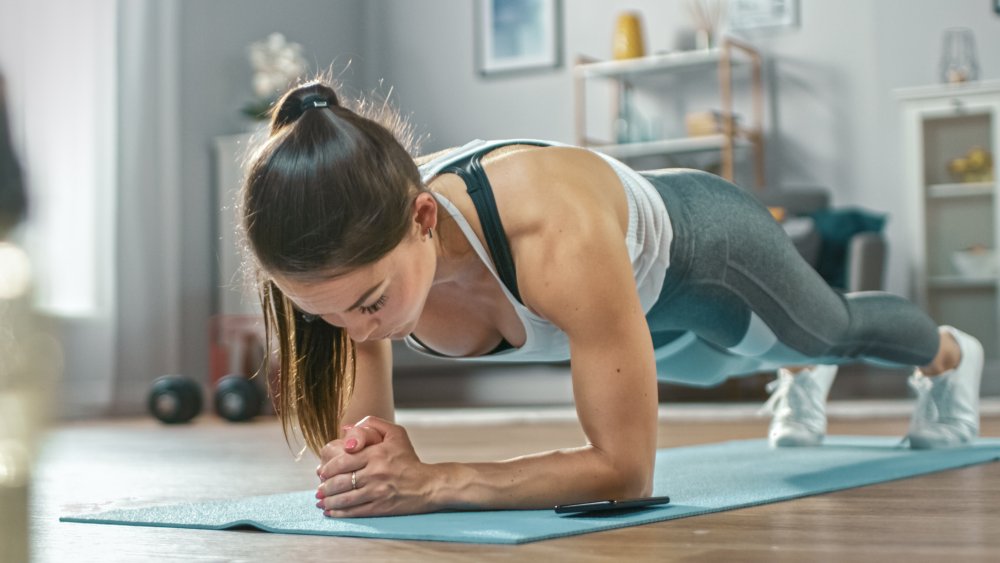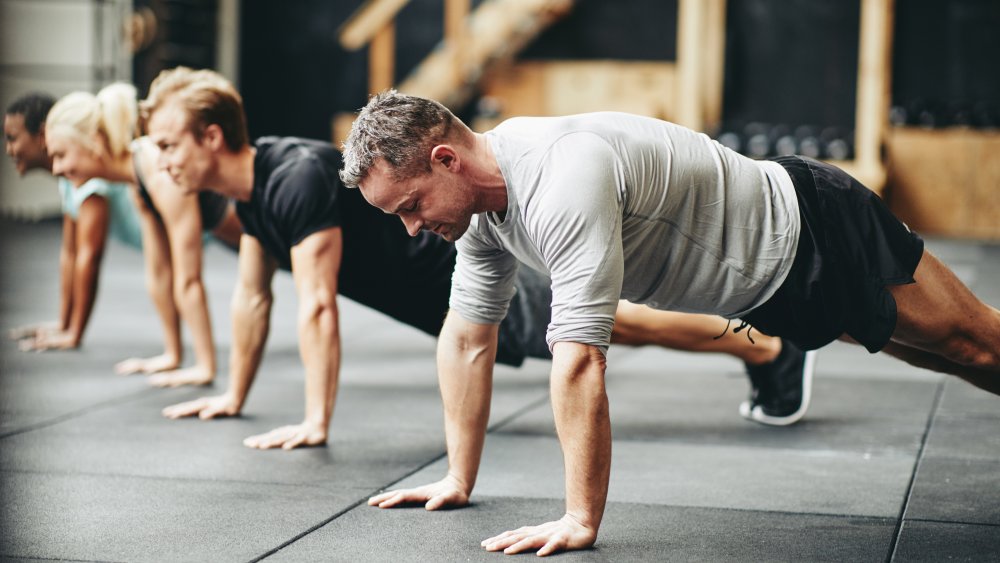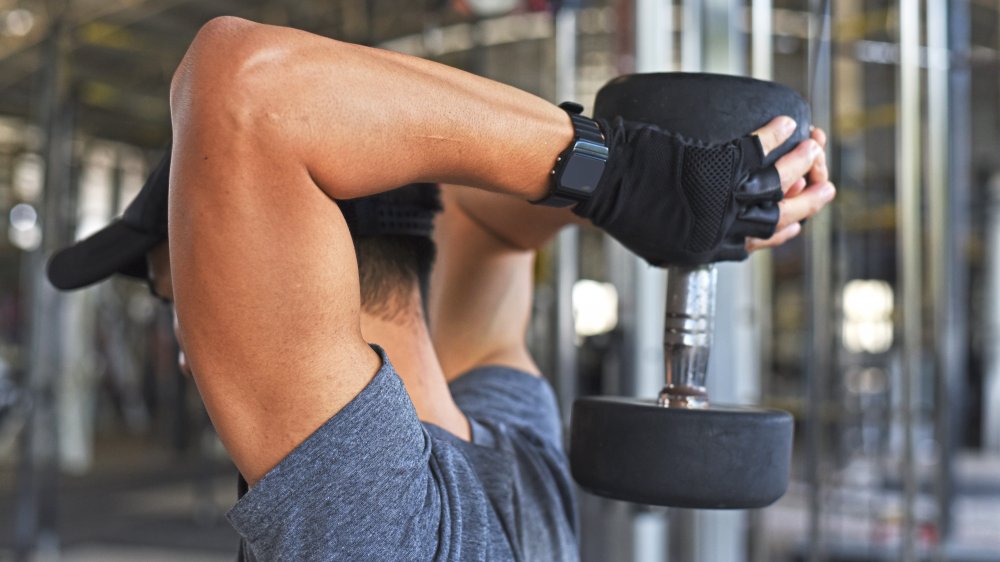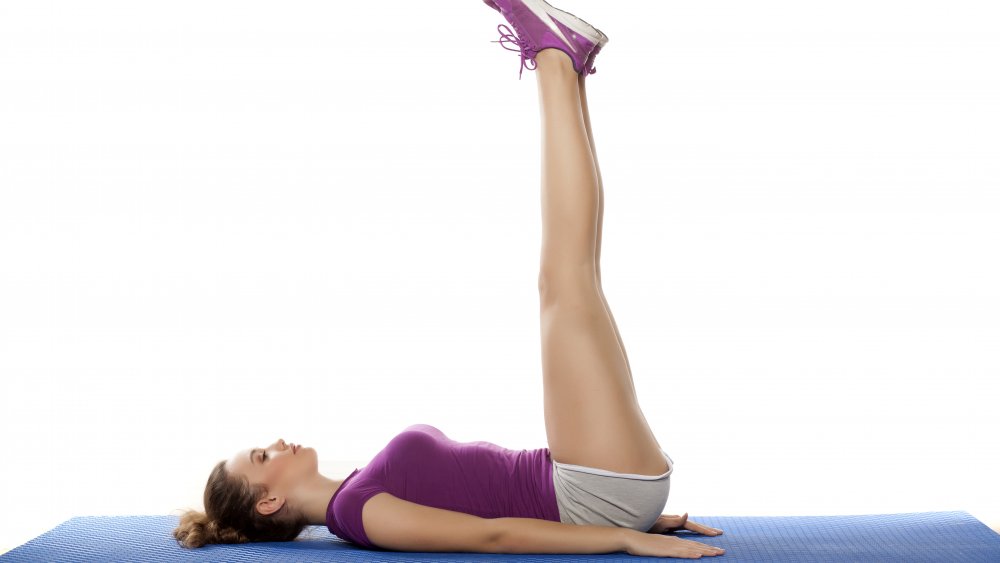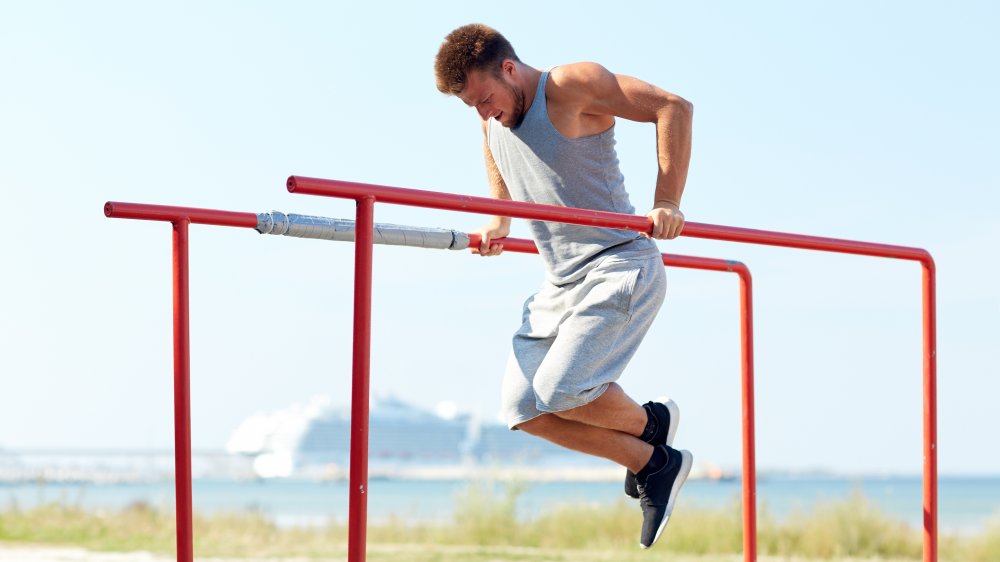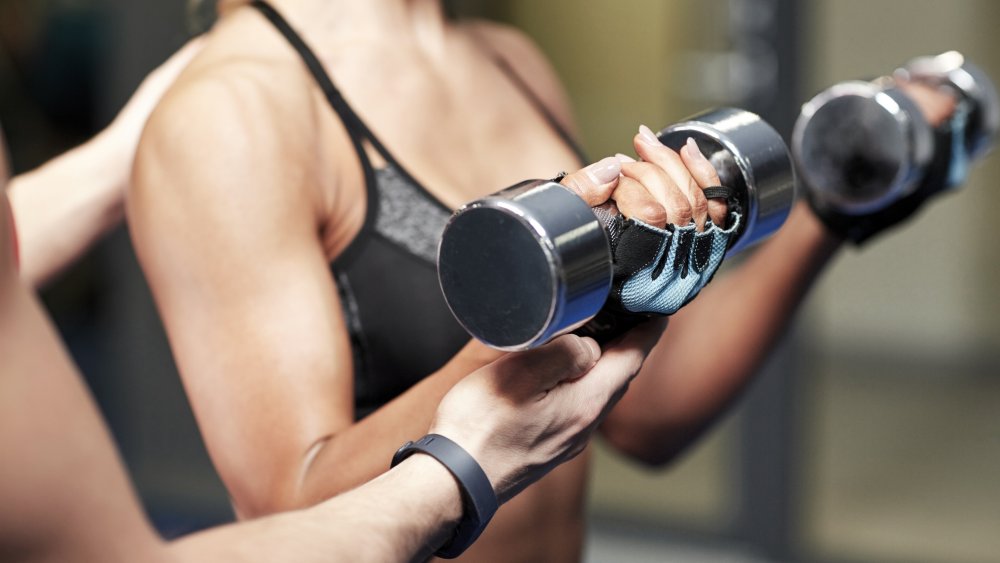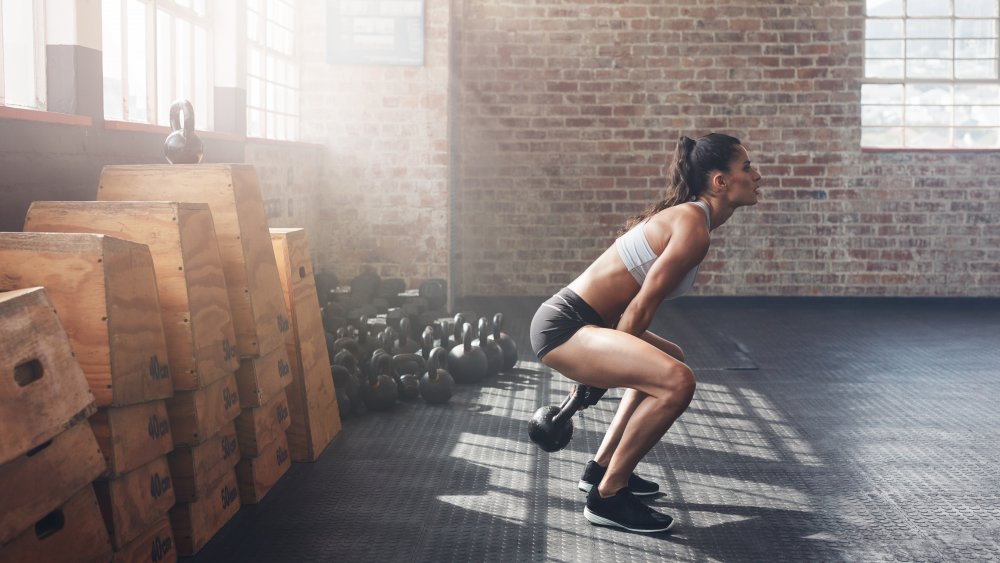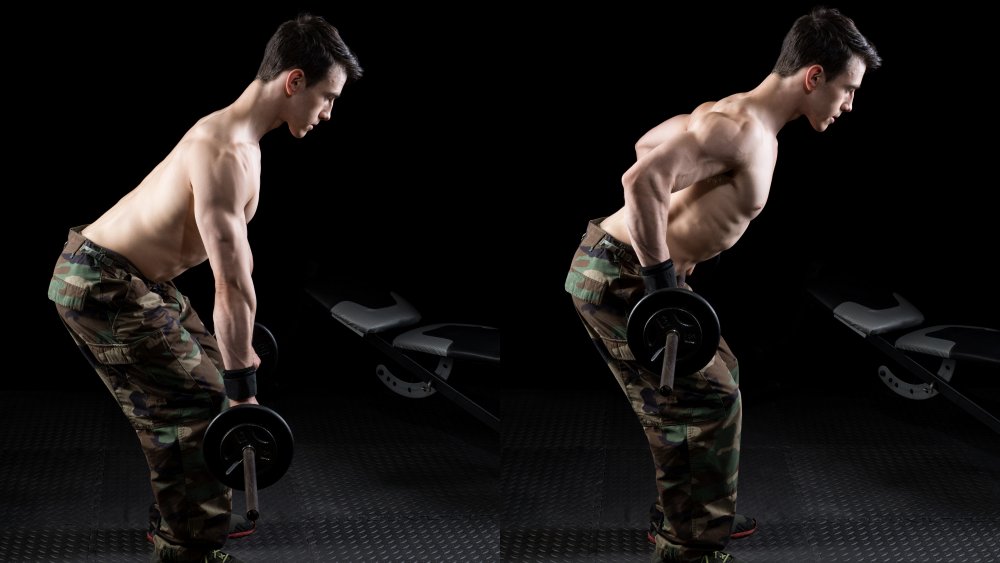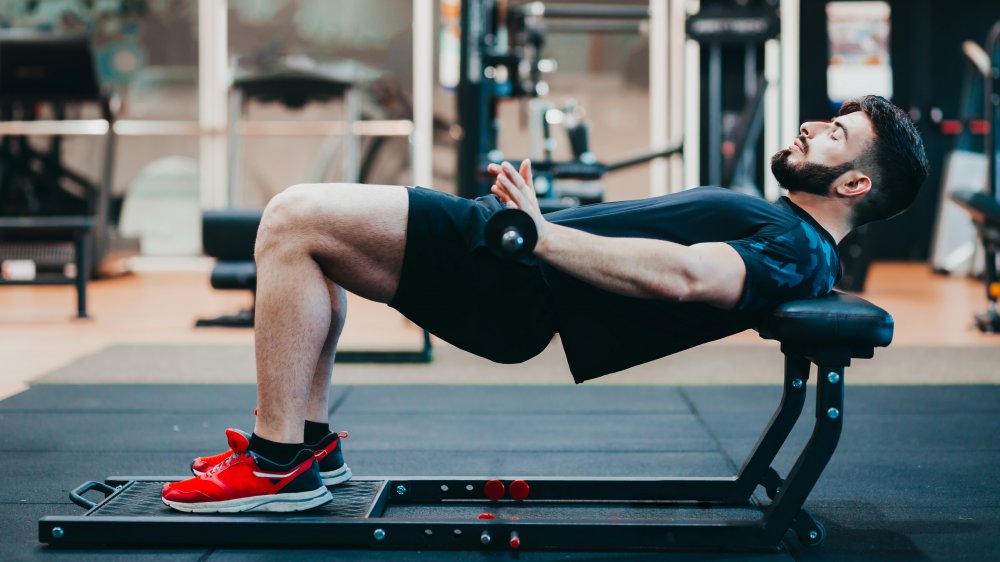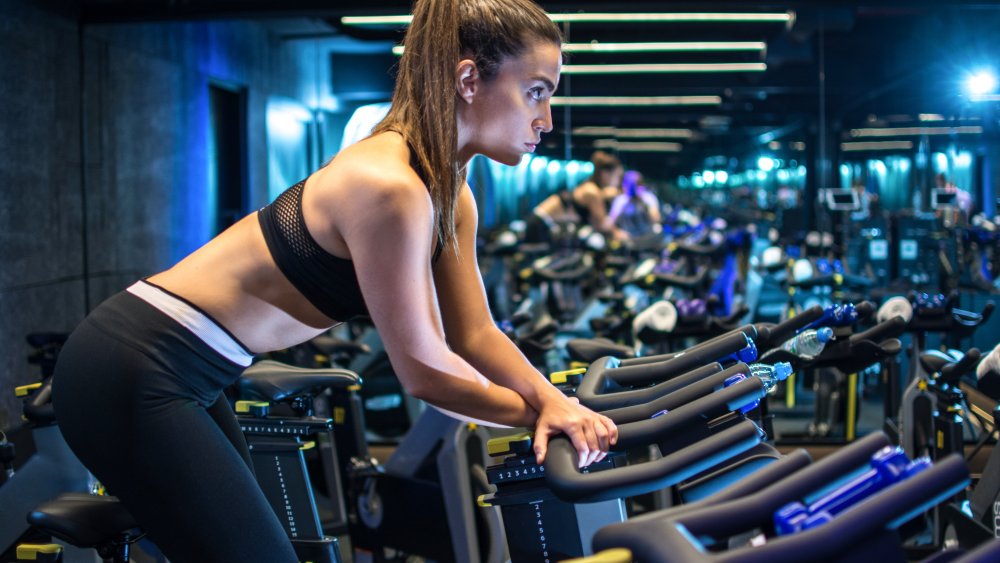Exercises You've Been Doing Wrong Your Whole Life
There are some exercises you've been doing wrong your whole life, believe it or not. Yes, even ones that have been in your fitness vernacular since you were in elementary school, like pushups and squats. Maybe you learned how to do these movements in PE class alongside dozens of other students. There's no guarantee that you picked up the right form from this brief instruction, or more importantly, that your form was addressed if incorrect (instructors only have two eyes, after all).
And even if you've made exercise an important part of your day-to-day life as an adult, chances are you're holding on to a few exercise mistakes you've been making since childhood. It's not your fault, really, it's just that multi-joint movements, like pull-ups and lunges, are more complicated than you might think. And if you have muscular imbalances or weaknesses, you may end up making mistakes without ever knowing it. So set aside the assumption that you're well-versed in proper exercise form and take a minute to consider the exercises you've likely been performing incorrectly throughout your entire life.
Squats
If your knees, hips, and ankles bend, you're probably familiar with performing a squat. Nevertheless, your body's mechanics are incredibly important for this muscle-strengthening exercise. A squat requires the engagement of every major muscle group in your lower body and core, which means if you get even one thing wrong, over time, you could end up injured or incapable of seeing greater strength gains.
That's why Dr. Lem Taylor, exercise physiology professor at the University of Mary Hardin-Baylor's School of Exercise and Sport Science, told Health Digest that before you even attempt to squat, you need to "learn to squat!" Feet should be slightly wider than shoulder-width apart. Taylor pointed out a common mistake: People "break at the waist and lean forward" rather than bending the knees and hips to get depth, dropping the glutes back and down toward the heels, and maintaining an upright chest and neutral spine.
Taylor's advice? "Don't let those knees go crazy laterally — try to keep them stable." A good trick for getting this right is to watch yourself in a mirror and keep your knees aligned with your feet.
Crunches
Anyone who's ever done ab work has probably cranked out a few crunches. The movement seems simple enough, right? You just engage your abs and use your core to lift your head, neck, and shoulders from the ground. But even simple exercises can be more complicated than they appear. C.J. McFarland, head strength and conditioning coach at Onnit Academy Gym in Austin, Texas, told Health Digest, "This is a very common exercise in many core strengthening programs; however, it's often done wrong and places a significant amount of stress on the vertebral column. The biggest mistake I see is where people lock their hands behind the neck and use their arm strength to pull their head up toward their knees." He continued, saying, "This mistake can lead to problems with the cervical spine, which can be painful as you age."
Luckily, the fix is fairly simple. McFarland advises that you should place your hands near your head, but only touch your head with your finger tips. Then, really focus on using your rectus abdominis (your "six-pack muscles") to lift the upper torso toward the knees, doing so in a slow and controlled manner.
Deadlifts
Deadlifts are a multi-joint exercise that require coordinated movements. If one part of the exercise is incorrect, it affects the entire chain of movements. Dr. Lem Taylor, exercise physiology professor at the University of Mary Hardin-Baylor's School of Exercise and Sport Science, and his colleague, Simone Tucker, assistant professor of exercise science, each pointed out the ways deadlifts can go wrong.
Taylor told Health Digest that some people have the tendency to "jerk" into the movement at the start. "I see a lot of slack in the arms, but it's important to stay tight. Before initiating the deadlift, slowly tighten up the slack in your chest, arms, and shoulders so they're all one unit as you lift the weight off the floor," he explained.
If the starting position is incorrect, the entire movement is likely to have problems, according to Tucker. "Rounding the spine, heels coming off the floor, allowing the shoulders to round forward, and hyperextending the neck are all common mistakes," she explained. As you get set, your hips should be lower than the shoulders, your feet flat, and slightly wider than hip-width apart, Tucker advises. Your back and neck should be neutral and aligned, with your shoulder blades engaged and pulled down and back.
Lunges
Dr. Lem Taylor, exercise physiology professor at the University of Mary Hardin-Baylor's School of Exercise and Sport Science, doesn't mince words when it comes to common lunge mistakes. "The primary issue is [many people] don't lunge — it's more like a quarter or a half lunge," he remarked to Health Digest. And if you're not moving through a full range of movement, you're not going to get the strength gains you're looking for.
Taylor suggests focusing on the right length of your step. That is, a big step — roughly double the size of a normal step — but not a huge step, which can cause balance issues. And when it comes to maintaining balance, Taylor says, "Don't try to put one foot right out in front of the other (like walking on a tightrope)." Rather, maintain the width between your feet at roughly hip-distance.
As with any exercise of this sort, a lunge requires coordination and engagement of multiple joints and muscle groups. As such, it's important to start with the basics. Avoid adding resistance like dumbbells or barbells until you've mastered the proper form. "There are a lot of versions out there, so master your basic walking lunge and step-back lunge before you get into the others," according to Taylor.
Planks
Planks are an exercise that make you think, "How could I mess this up? I'm just holding yourself in place." But body position is important for making sure you're targeting your core muscles effectively. This is particularly true because if you perform this exercise incorrectly, you could place stress on your spine or shoulders.
Luke Guaznon, founder and head strength and conditioning coach at Refinery Strength in New York, says details matter when it comes to performing planks, and this starts with elbow and hand position. "Elbows should be directly under the shoulders, hands planted on the floor in line with the elbows — hands shouldn't be interlocked," he explained to Health Digest. From there, attention needs to be paid to the shoulder blades, back, hips, and pelvis. "I see people with their backs rounded or 'sitting in' their shoulders, with shoulder blades together, and many times I see either butts up or down, but without core engagement due to improper hip positioning," Guaznon continued.
To get the movement correct, Guaznon says you'll want a neutral spine, which includes your neck and head. "A three-foot foam roller should be able to sit in a straight line from your tailbone to your mid-scapula to your head," he explained.
Pushups
Pushups are incredibly beneficial for building strength through the chest, shoulders, triceps, and core, but when done incorrectly, you could end up with back, wrist, or shoulder pain. Dr. Lem Taylor, exercise physiology professor at the University of Mary Hardin-Baylor's School of Exercise and Sport Science, told Health Digest, "The biggest issue I see is people getting their head into [very] uncomfortable positions, especially when fatiguing." Usually, a person will drop their head between their arms or crane their neck up in an effort to "dig deep" for that last little bit of strength. Really, one more repetition of a bad pushup isn't going to do you any favors, so remember to keep your head position aligned with your spine.
Taylor's other big piece of advice is to "make sure you're doing an actual pushup." If you're not moving through a full range of motion — lowering your chest to the ground with your elbows bending to 90-degrees — you won't be targeting your muscles effectively. "If you can't go down fully, then modify your type of pushup. Move to an incline pushup, widen your feet for a bigger base of support, or do them on your knees. Just make sure you move through the full range of motion," he suggested.
Overhead triceps extensions
Overhead triceps extensions can be done in a variety of ways, using everything from a cable rope extension to resistance bands to dumbbells. Regardless, Luke Guaznon, founder and head strength and conditioning coach at Refinery Strength in New York, says he notices the same common mistakes with all of them. "The biggest mistake I see is letting the elbows flare out and not keeping them tucked in," he revealed to Health Digest. "My best cue is to keep the elbows 'pinned' to the ears and stable during the entire movement."
Guanzon continued, saying, "Beyond that, wrist extension, flexion, or sometimes even rotating the forearm at the end of the motion are all actions that put extra strain on the forearms and elbow. This isn't helpful because the focus should be on the triceps, so watch that little flick out of the wrist when you're using a rope or bar."
Lastly, Guanzon wants people to think about their head and neck position. "Due to it being an overhead motion, people tend to over-extend their head up, or tuck their chin down to their chest," he explained. "Always remember: Neutral head and spine, always in line."
Leg lifts
Leg lifts are one of those common ab exercises that have been around for years. If you've seen them done, you probably think you know how to do them correctly. The basic movement seems simple enough, doesn't it? You're just lifting and lowering your legs, targeting your so-called "lower abs" to do so. But according to C.J. McFarland, head strength and conditioning coach at Onnit Academy Gym in Austin, Texas, they're possible to perform incorrectly — and you could end up with back pain if you do them wrong.
"To maximize this exercise, you need to raise your legs until they're perpendicular to the ground; however, doing so can decrease the curvature of the lower-back and result in lumbar flexion," he explained to Health Digest. "To keep this a safe movement and reduce the probability of injury, place your hands underneath your lower back. This is in opposition to the century-long concept of placing your hands by your sides."
Triceps dips
Triceps dips can be a good option for targeting the triceps when you don't have access to other equipment, but there's a good chance you've been doing them wrong. "Elbows flaring away from the body is the biggest mistake, so I always tell my clients to keep their elbows 'pinned' to their ribs. This recruits more of the triceps and puts less strain on the shoulders," Luke Guanzon, founder and head strength and conditioning coach at Refinery Strength in New York, told Health Digest. This excess shoulder strain is a reason that triceps dips sometimes get a bad rap.
The other big issue Guanzon said you need to look out for is "over-extension of the shoulder or going way past the 90-degree elbow bend on the way down puts the shoulder and chest under a lot of tension." This can spell pain or even injury, which leads us to Guanzon's final tip regarding triceps exercises. "If [triceps dips] feel unnatural or painful, there are always alternatives that hit the same muscle, such as close-grip bench press, or medicine ball pushups," he explained. "Don't just think 'no pain, no gain;' pain means something is wrong!"
Biceps curls
Sometimes the "gym bros" who spend the most time in the weight room are the ones who make the biggest biceps curls mistakes. Biceps are one of those "show me" muscles, where people like to bulk up and try to lift a lot of weight, often cheating on form to do so.
The most common mistake is "swinging" the arms and body to lift and lower the weight, which actually decreases how much the biceps are targeted, increasing the effects of momentum and engaging other muscle groups, according to Dr. Lem Taylor, exercise physiology professor at the University of Mary Hardin-Baylor's School of Exercise and Sport Science, and his colleague, Simone Tucker, assistant professor of exercise science.
Taylor put it simply when speaking with Health Digest: "Keep your upper body position upright and use your biceps (and biceps alone) to move the weight." Tucker added that this swinging motion isn't the only problem. You need to pay attention to your wrists and elbows to prevent joint injuries. "You shouldn't allow your elbows to fully extend during the downward phase of the exercise," she explained, "and your wrists should stay in alignment with the forearms."
Kettlebell swings
Luke Guanzon, founder and head strength and conditioning coach at Refinery Strength in New York, doesn't pull any punches when it comes to kettlebell swings. "The first thing you need to ask is why am I performing this exercise? This movement is meant to be explosive and powerful and performed with no existing injuries," he said in an interview with Health Digest.
If kettlebell swings are important to your training, though, Guanzon says you should first make sure your starting position is correct. Your feet should be positioned slightly wider than they would be for a squat and the kettlebell should be just in front of your toes. Instead of leaning forward or squatting down to pick up the kettlebell, Guanzon says, "Hinge from your hips, keeping a neutral spine, and grab the kettlebell like you're going to hike a football. Pick the kettlebell up with your weight in your heels, arms straight, using your glutes and hamstrings to return to standing."
For the swing itself, Guanzon advised, "As you move, hinge from the hips so they press up and back, then use your hamstrings and glutes to powerfully press your hips forward as you lock your glutes, causing the kettlebell to swing. Your heels should never leave the floor. Your arms are just holding the kettlebell."
Bent-over rows
The bent-over row targets the major muscles of the back. Right off the bat, this can cause some problems. While it's the muscles of the back that should be engaged and initiating the pulling motion, it's actually the arms that move. For people who aren't familiar with the exercise's proper form, it's common for the arms to become more engaged than recommended, with the biceps and shoulders becoming overly involved.
One way to make sure you're targeting your back is to get your initial starting position correct. Simone Tucker, assistant professor of exercise science at the University of Mary Hardin-Baylor's School of Exercise and Sport Science, told Health Digest, "The bent-over row is tricky because ... it requires a strong, neutral spine. The 'bend' should come at the hips, not the back. So, retract your scapulae [shoulder blade] down and back to maintain a strong, neutral back." It's this scapulae retraction that helps pull your shoulders away from your ears and prepares your back to do the bulk of the work.
Hip thrusters
Weighted hip thrusters are "one of the more superior hip-dominant movements available," according to C.J. McFarland, head strength and conditioning coach at Onnit Academy Gym in Austin, Texas. They're excellent for targeting the glutes and hamstrings, while requiring engagement of the core. But the action, which involves lowering the hips toward the floor before lifting them up to a "table top" position between your knees and shoulders, requires posterior pelvic tilting — something many people struggle to perform.
An anterior pelvic tilt occurs when you press your butt back and out, rounding out your low back, with your hip bones tipping forward. Conversely, posterior pelvic tilt takes place when you press your sacrum forward, pulling your hip bones back, flattening out your lower back. McFarland told Health Digest, "Performing a hip thrust with anterior pelvic tilt results in more work of the lower back and almost completely remove the glutes and hamstrings from the equation." To get the exercises right, he suggests performing "hip resets" before hip thrusters. "Maneuver between anterior and posterior pelvic tilt in a standing position to help you maximize the movement."
Tabata training
Tabata training is a very specific form of high-intensity interval training (HIIT). But just because you're using Tabata-style intervals, which involve eight rounds of 20-second work, followed by 10 seconds of rest (four minutes total), that doesn't mean you're performing Tabata training.
Simone Tucker, assistant professor of exercise science at the University of Mary Hardin-Baylor's School of Exercise and Sport Science, explained that these intervals are based on a study in which "one group of participants exercised at 70 percent of their VO2max (a measure of cardiovascular fitness) for 60 minutes a day, five days a week while the other group exercised at 170 percent, but for only four minutes a day, four days a week." The result? "Both groups saw similar improvements in aerobic capacity, but the group that performed the intervals also saw improvements in anaerobic capacity," Tucker explained.
However, if you're only exercising four minutes a day and are not pushing yourself as hard as study participants, you're unlikely to see the same results, Tucker told Health Digest. "Without doing a true VO2max test, it's difficult to know what your 100 percent is, let alone your 170 percent!"

